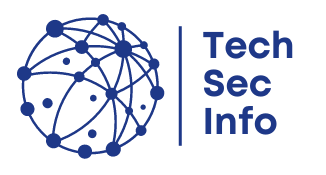View CSAF
1. EXECUTIVE SUMMARY
- CVSS v4 8.4
- ATTENTION: Low attack complexity
- Vendor: Delta Electronics
- Equipment: CNCSoft-G2
- Vulnerabilities: Stack-based Buffer Overflow, Out-of-bounds Write, Out-of-bounds Read, Heap-based Buffer Overflow
2. RISK EVALUATION
Successful exploitation of these vulnerabilities could cause a buffer overflow condition and allow remote code execution.
3. TECHNICAL DETAILS
3.1 AFFECTED PRODUCTS
The following versions of Delta Electronics CNCSoft-G2, a Human-Machine Interface (HMI) software, are affected:
- CNCSoft-G2: Version 2.0.0.5
3.2 Vulnerability Overview
3.2.1 STACK-BASED BUFFER OVERFLOW CWE-121
Delta Electronics CNCSoft-G2 lacks proper validation of the length of user-supplied data prior to copying it to a fixed-length stack-based buffer. If a target visits a malicious page or opens a malicious file an attacker can leverage this vulnerability to execute code in the context of the current process.
CVE-2024-39880 has been assigned to this vulnerability. A CVSS v3.1 base score of 7.8 has been calculated; the CVSS vector string is (AV:L/AC:L/PR:N/UI:R/S:U/C:H/I:H/A:H).
A CVSS v4 score has also been calculated for CVE-2024-39880. A base score of 8.4 has been calculated; the CVSS vector string is (CVSS4.0/AV:L/AC:L/AT:N/PR:N/UI:A/VC:H/VI:H/VA:H/SC:N/SI:N/SA:N).
3.2.2 OUT-OF-BOUNDS WRITE CWE-787
Delta Electronics CNCSoft-G2 lacks proper validation of user-supplied data, which can result in a memory corruption condition. If a target visits a malicious page or opens a malicious file an attacker can leverage this vulnerability to execute code in the context of the current process.
CVE-2024-39881 has been assigned to this vulnerability. A CVSS v3.1 base score of 7.8 has been calculated; the CVSS vector string is (AV:L/AC:L/PR:N/UI:R/S:U/C:H/I:H/A:H).
A CVSS v4 score has also been calculated for CVE-2024-39881. A base score of 8.4 has been calculated; the CVSS vector string is (CVSS4.0/AV:L/AC:L/AT:N/PR:N/UI:A/VC:H/VI:H/VA:H/SC:N/SI:N/SA:N).
3.2.3 OUT-OF-BOUNDS READ CWE-125
Delta Electronics CNCSoft-G2 lacks proper validation of user-supplied data, which can result in a read past the end of an allocated buffer. If a target visits a malicious page or opens a malicious file an attacker can leverage this vulnerability to execute code in the context of the current process.
CVE-2024-39882 has been assigned to this vulnerability. A CVSS v3.1 base score of 7.8 has been calculated; the CVSS vector string is (AV:L/AC:L/PR:N/UI:R/S:U/C:H/I:H/A:H).
A CVSS v4 score has also been calculated for CVE-2024-39882. A base score of 8.4 has been calculated; the CVSS vector string is (CVSS4.0/AV:L/AC:L/AT:N/PR:N/UI:A/VC:H/VI:H/VA:H/SC:N/SI:N/SA:N).
3.2.4 HEAP-BASED BUFFER OVERFLOW CWE-122
Delta Electronics CNCSoft-G2 lacks proper validation of the length of user-supplied data prior to copying it to a fixed-length heap-based buffer. If a target visits a malicious page or opens a malicious file an attacker can leverage this vulnerability to execute code in the context of the current process.
CVE-2024-39883 has been assigned to this vulnerability. A CVSS v3.1 base score of 7.8 has been calculated; the CVSS vector string is (AV:L/AC:L/PR:N/UI:R/S:U/C:H/I:H/A:H).
A CVSS v4 score has also been calculated for CVE-2024-39883. A base score of 8.4 has been calculated; the CVSS vector string is (CVSS4.0/AV:L/AC:L/AT:N/PR:N/UI:A/VC:H/VI:H/VA:H/SC:N/SI:N/SA:N).
3.3 BACKGROUND
- CRITICAL INFRASTRUCTURE SECTORS: Energy, Critical Manufacturing
- COUNTRIES/AREAS DEPLOYED: Worldwide
- COMPANY HEADQUARTERS LOCATION: Taiwan
3.4 RESEARCHER
Bobby Gould and Fritz Sands of Trend Micro Zero Day Initiative reported these vulnerabilities to CISA.
4. MITIGATIONS
Delta Electronics recommends users update to CNCSoft-G2 V2.1.0.10 or later.
CISA recommends users take defensive measures to minimize the risk of exploitation of these vulnerabilities, such as:
- Minimize network exposure for all control system devices and/or systems, ensuring they are not accessible from the internet.
- Locate control system networks and remote devices behind firewalls and isolating them from business networks.
- When remote access is required, use more secure methods, such as Virtual Private Networks (VPNs), recognizing VPNs may have vulnerabilities and should be updated to the most current version available. Also recognize VPN is only as secure as the connected devices.
CISA reminds organizations to perform proper impact analysis and risk assessment prior to deploying defensive measures.
CISA also provides a section for control systems security recommended practices on the ICS webpage on cisa.gov/ics. Several CISA products detailing cyber defense best practices are available for reading and download, including Improving Industrial Control Systems Cybersecurity with Defense-in-Depth Strategies.
CISA encourages organizations to implement recommended cybersecurity strategies for proactive defense of ICS assets.
Additional mitigation guidance and recommended practices are publicly available on the ICS webpage at cisa.gov/ics in the technical information paper, ICS-TIP-12-146-01B–Targeted Cyber Intrusion Detection and Mitigation Strategies.
Organizations observing suspected malicious activity should follow established internal procedures and report findings to CISA for tracking and correlation against other incidents.
CISA also recommends users take the following measures to protect themselves from social engineering attacks:
- Do not click web links or open attachments in unsolicited email messages.
- Refer to Recognizing and Avoiding Email Scams for more information on avoiding email scams.
- Refer to Avoiding Social Engineering and Phishing Attacks for more information on social engineering attacks.
No known public exploitation specifically targeting these vulnerabilities has been reported to CISA at this time. These vulnerabilities are not exploitable remotely.
5. UPDATE HISTORY
- July 09, 2024: Initial Publication
